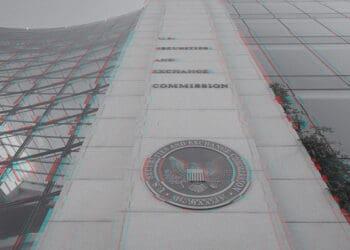New Rules to Simplify Disclosure Requirements
The SEC’s new and proposed rules allow companies to update and simplify their disclosure requirements as part of the SEC’s overall disclosure effectiveness review. This modernization of the SEC disclosure system discussed in the SEC’s Regulation S-K concept release in 2016 is designed to eliminate redundant, overlapping and outdated requirements and align them with current accounting principles and improvement in technology.
Adopted Rules
Companies can look forward to modernized disclosure procedures since the Securities and Exchange Commission recently adopted new rules addressing the hyperlinking of exhibits and HTML, released the long awaited IFRS XBRL Taxonomy and proposed rules in support of iXBRL.
Realizing the document disclosure system is antiquated, the Securities and Exchange Commission (SEC) voted at its March 1 meeting to require public companies to include a hyperlink to each exhibit in the filing’s exhibit index. The hyperlinks, based on the Aug. 30, 2016 Hyperlinked and HTML proposing rules, are designed to make it easier for investors to locate exhibits attached to their corporate financial filings.
Currently, companies provide a list of exhibits, including bylaws and underwriting agreements. The exhibits may be incorporated by reference, which means explaining where supporting filings are located by providing information, such as the form type, date and time of filing. The burden then falls to the investor to locate the documents on the SEC Electronic Data Gathering, Analysis and Retrieval (EDGAR) system.
While investors may view having to manually search through a company’s SEC EDGAR filings as cumbersome, the move toward incorporating hyperlinks streamlines the search process and creates easier access to contracts and other documents.
The new rule also requires the use of HTML for all filings and eliminates the American Standard Code for Information Interchange format as an SEC filing option. HTML and hyperlinks are already the standards on the internet, and with this rule, they now become the standards at the SEC, too.
The adopting rule became effective on Sept. 1, 2016 for registrants filing registration statements and reports subject to the exhibit requirements under Item 601 of Regulation S-K or those that file forms F-10 or 20-F. Registrants defined as “small reporting companies” have an effective date of Sept. 1, 2018. The compliance date to any Form 10-D that requires hyperlinks to any exhibits filed with Form ABS-EE is delayed until the SEC completes EDGAR programming allowing these forms to be submitted in a single submission.
Proposed Rule Changes
Keeping with easing filing burdens, the SEC adopted a proposal that initiates a mandatory phase-in for corporations and investment companies to file using Inline eXtensible Business Reporting Language (XBRL) or iXBRL, which will remove the anxiety of filing two separate documents: an HTML document and exhibits in XBRL. Submitting a single iXBRL document is expected to improve the quality of the data collected and disseminated to data aggregators.
The proposed rule also eliminates the requirement to post XBRL filing documents on a company’s corporate website. The phase-in allows a two-year window for adopting the new standard by software providers, filing agents and corporations. The first group to phase in is the large accelerated filers, followed the next year by accelerated filers, with non-accelerated filers and foreign private issuers in the last year of the phase-in.
The shift to iXBRL is particularly significant for smaller companies and filers that use stand-alone software solutions because more manual inputting of data is necessary for them. With iXBRL, they will no longer have the challenge of needing to maintain both an XBRL and HTML version of the filing and to keep track of late-breaking changes in two separate versions of essentially the same financial report.
As more U.S.-based companies begin to move to iXBRL, the best way to predict the impact of this new requirement is to look at successful implementations currently underway in other countries. Australia already adopted iXBRL across all of its agencies, as has the Irish Revenue On-Line Service tax authorities. Additionally, HM Revenue and Customs Service in the United Kingdom mandated iXBRL submissions in 2011 and is now reaping the benefits.
The SEC’s proposal to mandate iXBRL also increases the probability that the SEC will eventually require filers applying International Financial Reporting Standards (IFRS) to use the same technology. As the quality of submissions using iXBRL increases, it might create more interest in accelerating the convergence of U.S. Generally Accepted Accounting Principles and IFRS accounting standards.
And finally, the SEC delivered on its long-awaited IFRS-XBRL rule with the release of the taxonomy needed to tag IFRS filings. Foreign private issuers that prepare financial statements in accordance with IFRS as issued by the International Accounting Standards Board may immediately begin submitting their financial statements in XBRL.
The IFRS-XBRL rule completes the tasks outlined in the original SEC XBRL phase-in that began in 2009. The SEC is providing notice that public companies may file financial data in XBRL with their first annual report on Form 20-F or 40-F for the fiscal period ending on or after Dec. 15, 2017.
The fate of some of these proposed rules may rest on how the SEC moves forward under a new head. President Donald Trump has selected Wall Street attorney Walter “Jay” Clayton to head the SEC, but his Senate confirmation hearing was not concluded at the time of this article’s preparation.
That said, as the SEC looks to modernization, the agency is clearly emphasizing three areas of focus:
- eliminating duplicative disclosures,
- addressing the need for new disclosures and
- updating the format for these disclosures, using current data standards.
All of this is being coordinated under SEC efforts to keep investor protections in place while promoting capital formation.



 John Truzzolino is the Director, Corporate Governance Services for the Global Capital Markets Division of
John Truzzolino is the Director, Corporate Governance Services for the Global Capital Markets Division of 









